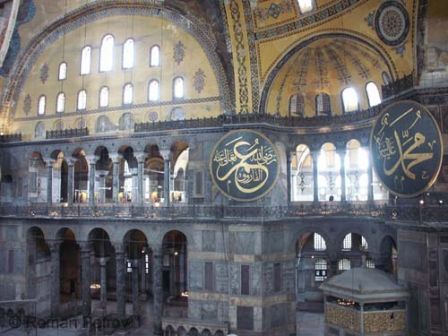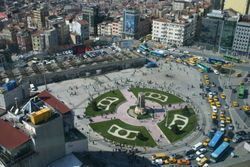Istanbul
is the largest city in
Turkey, and
arguably the most important. It is located on the
Bosphorus
strait, and encompasses the natural harbor known as the
Golden Horn
, in the northwest of the country. Istanbul extends both
on the
European
and on the
Asiatic side of
the Bosphorus and is thereby the only metropolis in the
world, which is on two continents. Its 2000 Census
population is 8,803,468 (city proper) and 10,018,735
(metropolitan area), making it, by some counts, one of
the largest cities in Europe.
Istanbul
encloses the southern Bosphorus which divides it into a
western, European and into an eastern, Asiatic area. The
Golden Horn, a Bosphorus bay running to the west,
separates the European part into a southern, between
Marmara Sea
and Golden Horn lying peninsula which is the historical
Istanbul and the northern quarter to the historical
Galata.
Both to the west, to the north and the east Istanbul
exceeds far over historical quarters. In the southeast
the
Prince's Islands
belonging to Istanbul lie. The city boundaries cover a
surface of 1.538,77 km². The Metropol region Istanbul (=
province Istanbul) has a surface of 5,220 km².
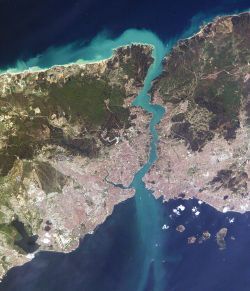
Istanbul
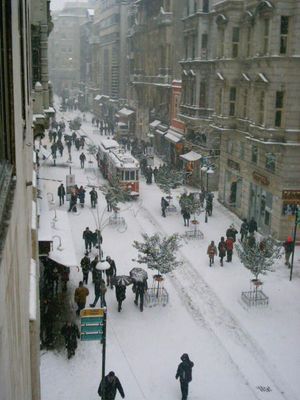
Istiklal Street

Bosphorus
Bridge
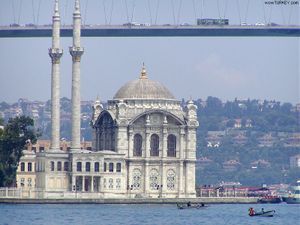
Ortaköy Mosque

